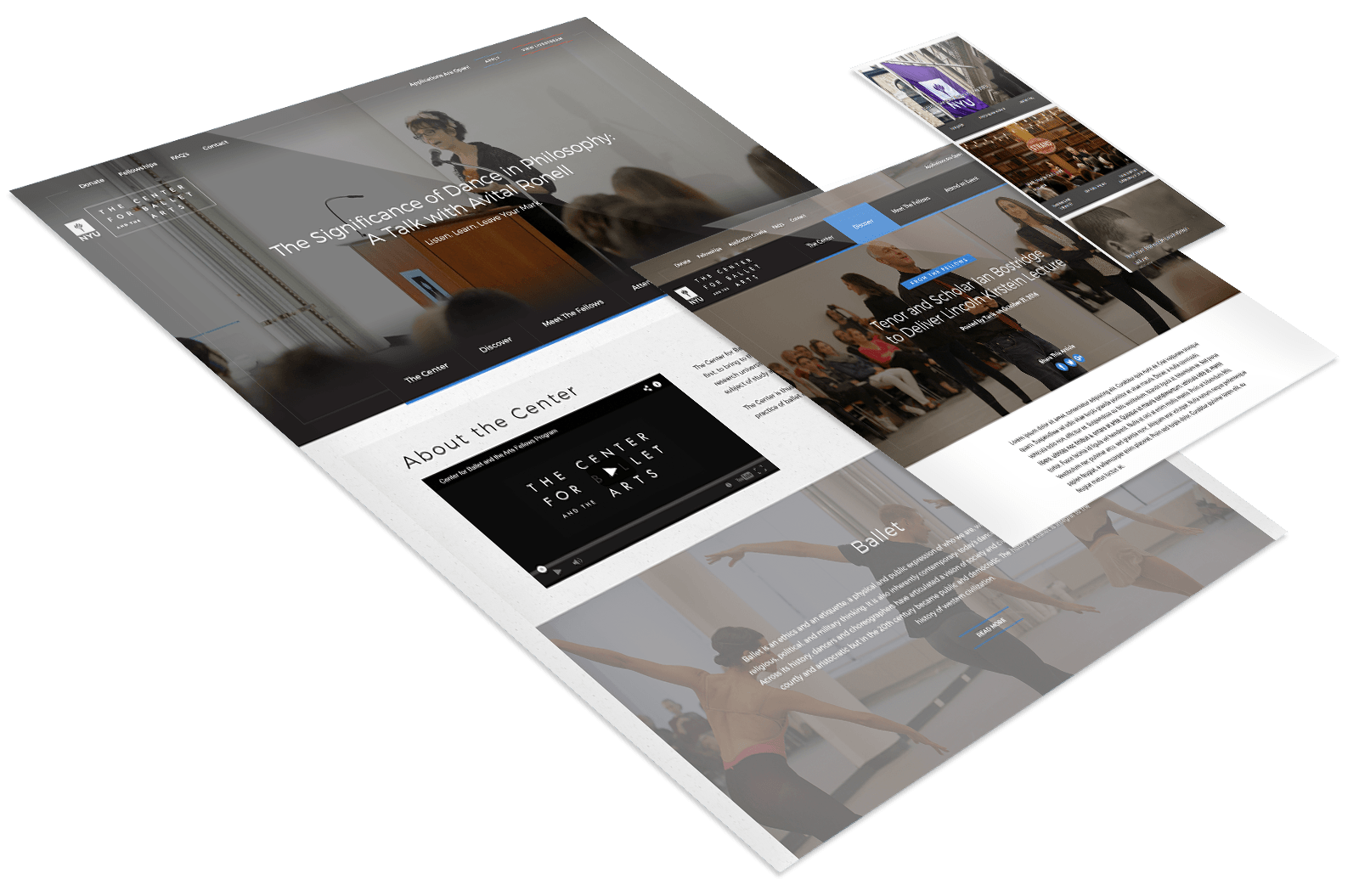The Right to See Your Site
Accessibility is not just a legal requirement , it’s a responsibility. When designing a website, overlooking accessibility details can create barriers for users and negatively impact your brand. The Americans with Disabilities Act (ADA) ensures equal access to digital spaces, and compliance with WCAG 2.1 AA standards is now the recognized benchmark for inclusive web design.
These guidelines ensure individuals with disabilities, including those who are visually impaired or blind, can fully navigate and interact with your website. From screen reader compatibility and proper contrast ratios to keyboard navigation and alternative text, every detail matters in making your site usable for all.
Our team specializes in ADA-compliant web design, conducting accessibility audits, applying WCAG 2.1 AA best practices, and testing functionality to deliver an inclusive digital experience.
Case Study
DESIGN BANG FOR YOUR BUCK

The Center for Ballet and the Arts at NYU:
Welcoming, Educating, Embracing: One Website, Two Audiences - A Case Study for the Arts
READ CASE STUDYFor those that don’t comply
ADA WCAG 2.1 AA compliance is not optional , it’s a necessity. Businesses that ignore these standards risk not only excluding audiences but also facing significant financial and legal consequences. Lawsuits for non-compliance have resulted in thousands of dollars in fines, along with long-term reputational damage that can be far more costly than any legal settlement.
- Audience Accessible
While compliance requires an investment, it delivers clear benefits. Meeting WCAG 2.1 AA standards protects your business from lawsuits while opening your website to an entirely new audience , individuals who are visually impaired or blind. These consumers, once included, can become some of your most loyal advocates, driving both brand equity and customer trust. - The power of PR
Most websites are still not fully compliant, meaning businesses that are proactive stand out. Beyond avoiding risk, ADA compliance enhances your public image. Demonstrating that you value accessibility shows your audience you care about inclusivity, which can translate into powerful PR and positive brand perception.
- So, where do you begin
Not every agency has the knowledge to deliver true compliance. At e9digital, we specialize in ADA-compliant web design and partner with a CPACC-certified accessibility auditor to ensure every site we develop meets WCAG 2.1 AA standards. From audits and remediation to ongoing monitoring, we help you maintain compliance while creating a website that is accessible, inclusive, and built for every user.
OUR PROCESS
Step 1
Understanding the access
We begin by helping clients fully understand the importance of ADA WCAG 2.1 AA compliance. This includes outlining the benefits, the associated costs, and the detailed process. From initial accessibility audits to development and final verification, we ensure you know exactly what to expect at every stage.
Step 2
Taking a first look
Next, we conduct an initial audit in partnership with a CPACC-certified accessibility expert. This review identifies compliance gaps and establishes a roadmap for remediation. The scope depends on site size , smaller sites may start at $1,900, with costs scaling as complexity increases.
Step 3
Crafting compliance
With a detailed compliance checklist, our engineers begin the remediation phase. From adjusting code to improving design, we ensure every element aligns with WCAG 2.1 AA standards. Along with cost estimates, we provide clear timelines so you can align your marketing efforts with your compliance milestones.
Step 4
Another look
Once remediation is complete, we re-engage CPACC for a follow-up audit. This secondary review verifies that your site is compliant and ready for public release. While less costly than the initial audit, this step is crucial to confirm your platform is accessible and legally protected.
Step 5
Keep up with the code
Websites evolve constantly with new content and features. To maintain compliance, we provide ongoing monthly or quarterly audits. This proactive approach ensures your site remains accessible, compliant, and protected from potential lawsuits while continuing to serve all users effectively.










